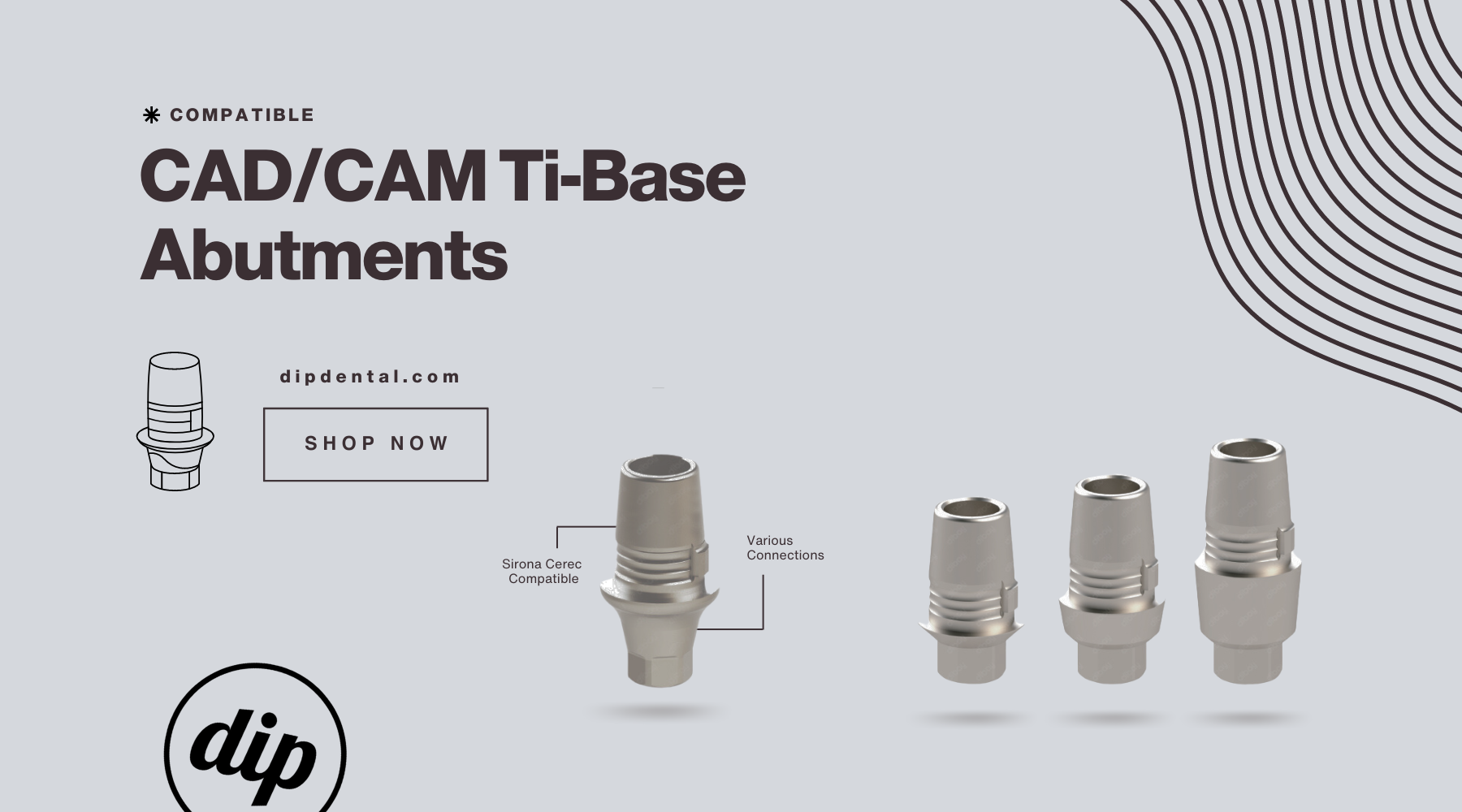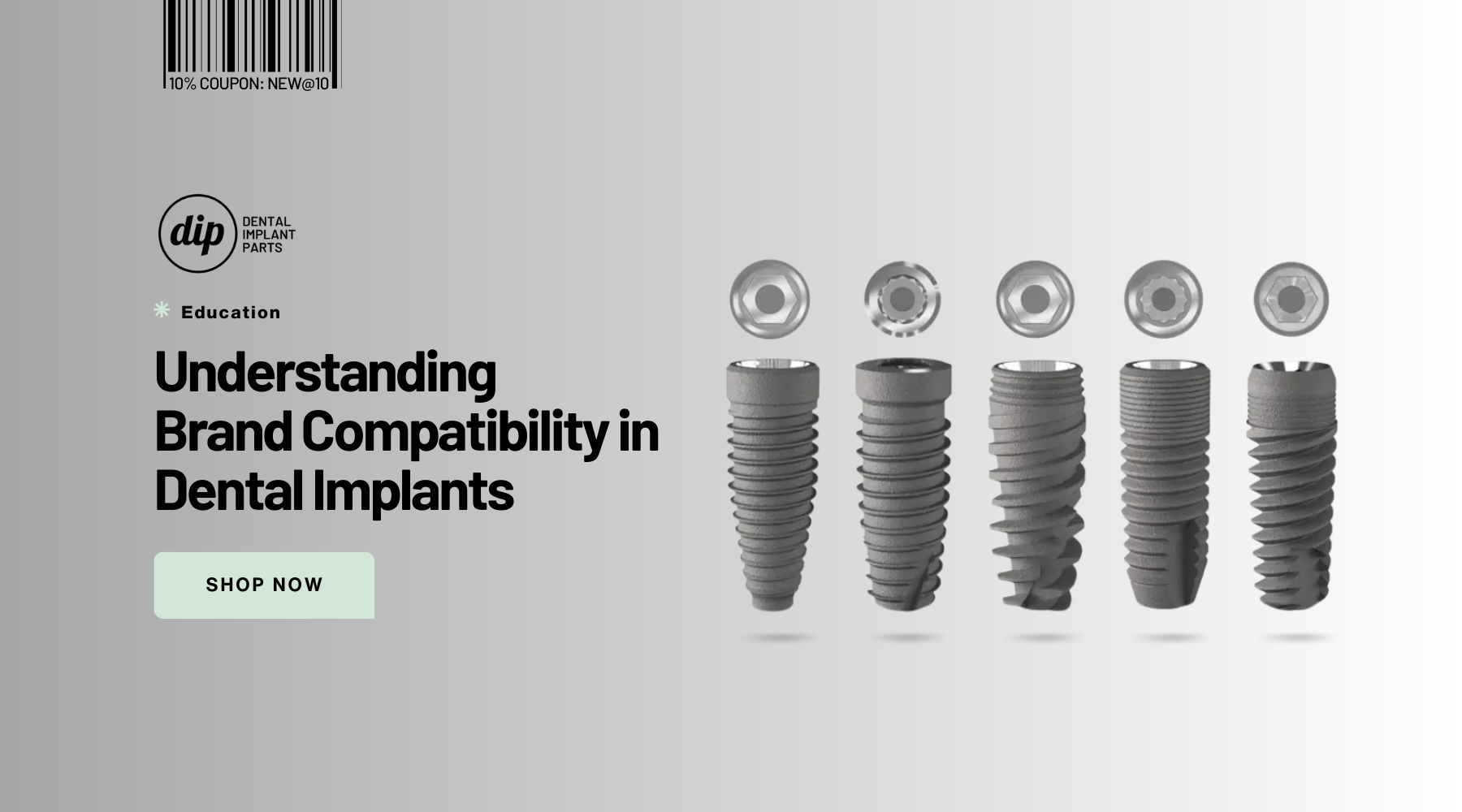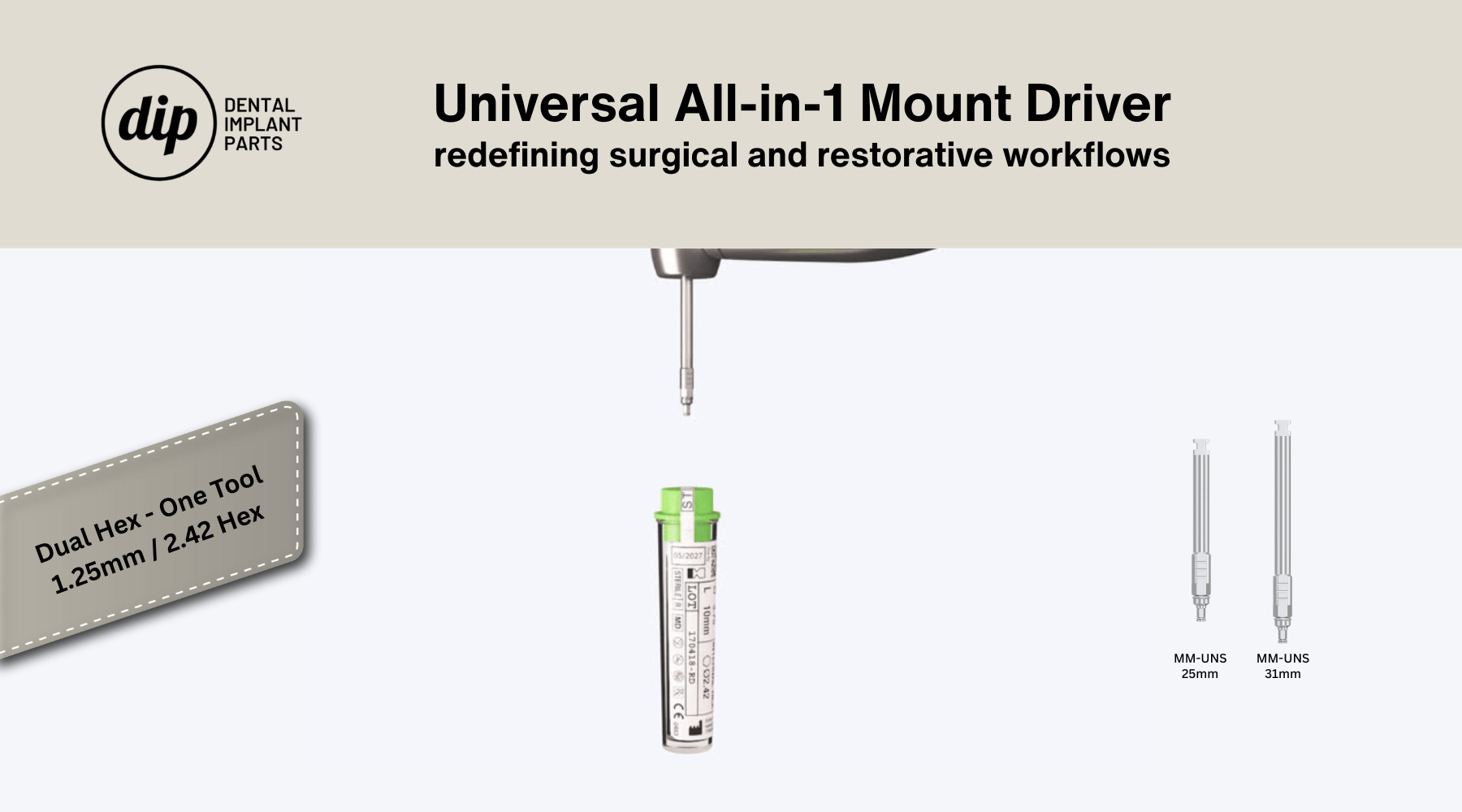In the ever-evolving world of implant dentistry, efficiency and predictability are paramount. Ti-base abutments, compatible with Sirona CEREC®, offer a compelling solution for streamlining implant workflows while maintaining high-quality results. This blog post delves into the world of Ti-base abutments, exploring their benefits, compatibility considerations, and how they can enhance your CEREC® implant workflow.
Demystifying Ti-Base Abutments: A Foundation for Efficiency
Ti-base abutments are prefabricated titanium bases designed for a seamless integration with various implant systems. They consist of two crucial components:
- Titanium Base: This component, typically made from biocompatible grade-4 titanium (Ti-6AL-4V-ELI), provides a sturdy foundation for the final restoration. The base features a platform that connects to the implant and a pre-shaped top surface.
- Scan Body: A scan body, also made of titanium or PEEK, is securely screwed onto the titanium base. This scan body allows for accurate digital capture of the abutment within the CEREC® software, facilitating the design and fabrication of the final restoration.
The key advantage of Ti-base abutments lies in their universality. Unlike traditional abutments specific to each implant system, Ti-bases offer compatibility with a wide range of implants from various manufacturers. This simplifies inventory management and streamlines the workflow, especially for practices utilizing diverse implant systems.
Ti-Base Abutments & Sirona CEREC®: A Symbiotic Partnership
Sirona CEREC® has revolutionized implant dentistry by enabling chairside design and fabrication of custom implant restorations. Ti-base abutments integrate seamlessly with this innovative system, offering several benefits:
- Simplified Workflow: Pre-fabricated Ti-base abutments eliminate the need for custom abutment fabrication, minimizing turnaround times and streamlining the overall treatment process.
- Enhanced Efficiency: With a variety of Ti-base options compatible with different implant platforms (regular, narrow, wide) and angulations, you can readily select the appropriate abutment for each case, reducing chair time and optimizing workflow.
- Predictable Outcomes: The standardized design and precise manufacturing of Ti-base abutments contribute to predictable results. This, coupled with the accuracy of CEREC® software, leads to well-fitting and reliable implant restorations.
- Improved Patient Satisfaction: Reduced treatment times and efficient workflows translate to a more positive patient experience. Additionally, the ability to design customized restorations with CEREC® allows for enhanced aesthetics, further contributing to patient satisfaction.
Compatibility Considerations:
While Ti-base abutments offer broad compatibility, it's crucial to ensure specific compatibility with your chosen implant system. Different implant manufacturers may have slight variations in platform design or screw threads. It's essential to verify compatibility between the Ti-base and the implant system you're using to guarantee a secure and well-fitting connection.
Here are some resources to help you ensure compatibility:
- Manufacturer Catalogs: Most Ti-base manufacturers provide detailed compatibility charts listing supported implant systems.
- Dental Supply Distributors: Your dental supply distributor can be a valuable resource for information on compatible Ti-base options for your specific implant systems.
Integrating Ti-Base Abutments into Your CEREC® Workflow
Here's a step-by-step approach to incorporating Ti-base abutments into your CEREC® implant workflow:
- Implant Placement and Osseointegration: Perform the implant placement surgery and ensure proper osseointegration according to the implant system's guidelines.
- Abutment Selection: Once the implant has osseointegrated, select a Ti-base abutment compatible with the implant system and offering the desired platform size and angulation.
- Impression or Intraoral Scan: Depending on your preferred workflow, you can take a conventional impression or utilize intraoral scanning technology to capture the definitive implant position.
- Digital Integration: Within the CEREC® software, import the digital impression or scan data. The scan body of the Ti-base abutment should be readily recognized by the software, allowing for accurate digital representation of the implant position.
- Restoration Design: Utilize the CEREC® software to design the final restoration, considering factors like crown type (single crown, bridge pontic, etc.), desired material (zirconia, porcelain, etc.), and occlusion.
- Fabrication and Delivery: The designed restoration can then be milled chairside with CEREC® milling units or sent to a dental lab for fabrication. Once ready, the final restoration is securely cemented or screwed onto the Ti-base abutment.




